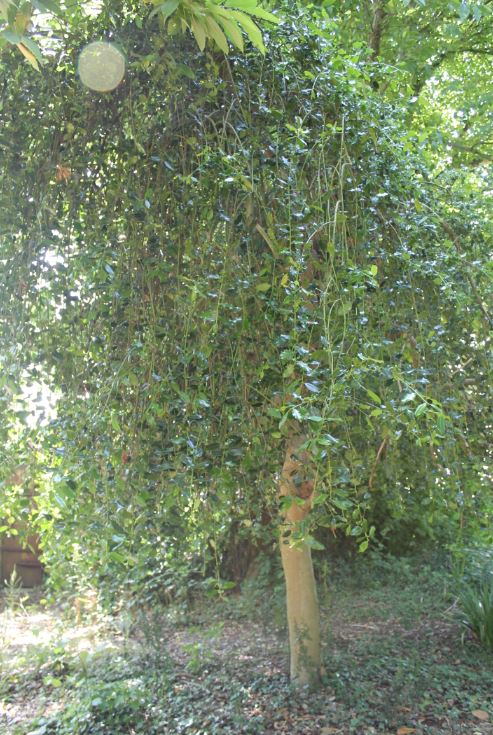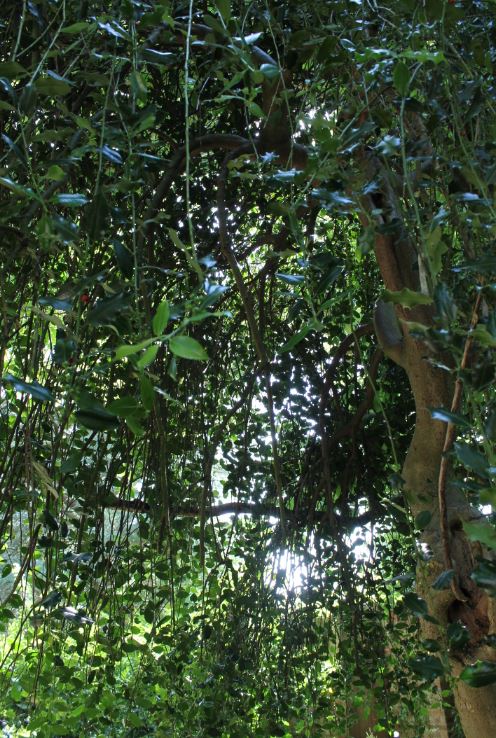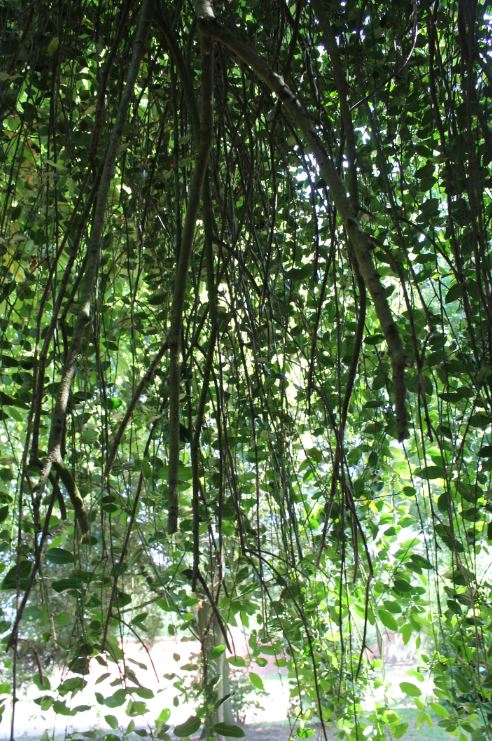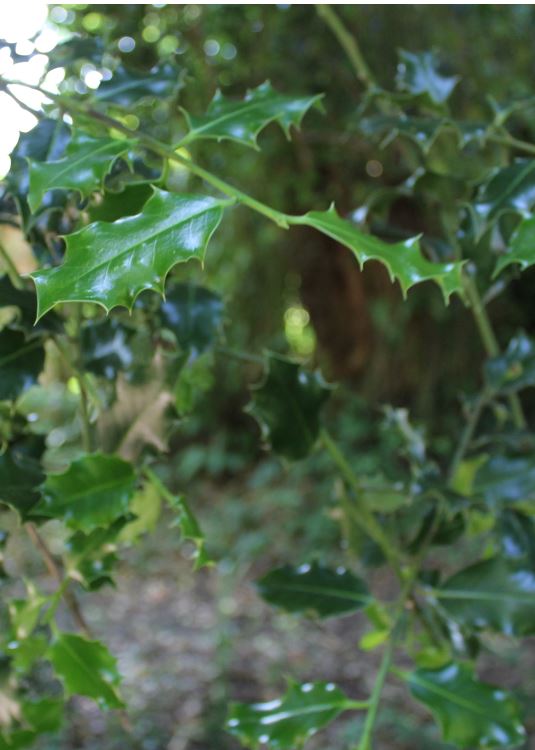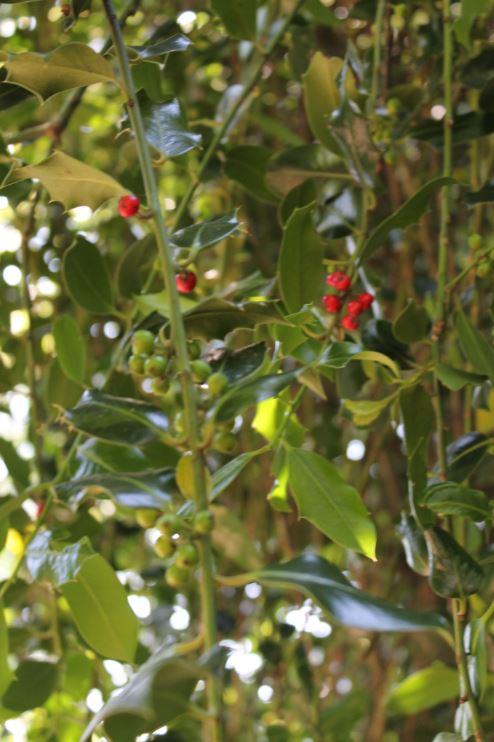Make sure your volume is on: "The branches fold down upon themselves"
Show transcript
So this is an ilex aquifolium, or a holly. This one is not typical as you might see in any other holly. This one is what we call ‘weeping’.
So you get willows which are weeping, most typically. From Harry Potter, that is where most people will know it from. But this holly has had something done to it – variation – which means that instead of growing in typical form, which is quite conical and grows straight up and then branches out, this one has decided to grow up, and then all of the branches fold down upon itself and creates this sort of shower effect.
Normally the holly is associated with Christmas. Birds love eating the red berries that it produces.
Also one thing about holly, if you notice looking at the holly at the very top you will see the leaves aren’t spiky. The reason for that is that there are no predators up there! So down at the bottom where the deer can reach, the leaves produce these spikes which are unpalatable – you get a sore mouth, whereas right at the top there is no need to have any spikes, so the leaves don’t produce them. That is common to every holly.
Berries for the birds – it is quite important for their winter food. It can take over certain areas, the undergrowth, the understory of woodland, it can certainly take over. But it is certainly nothing we would want to get rid of.
The reason they would be able to take over is because they are evergreen. So they are broadleaves which are evergreen which means that when they are in a forest like a beech woodland they are able to grow all the year round, whereas a beech would not be able to and would have go dormant for a while. Yeah, they get a bit of a headstart, a little bit longer to push through [Take over].
Because they are active during the winter they have this waxy leaf which is typical. They pump it full of oils, and that means they don’t get affected by frostbite.
